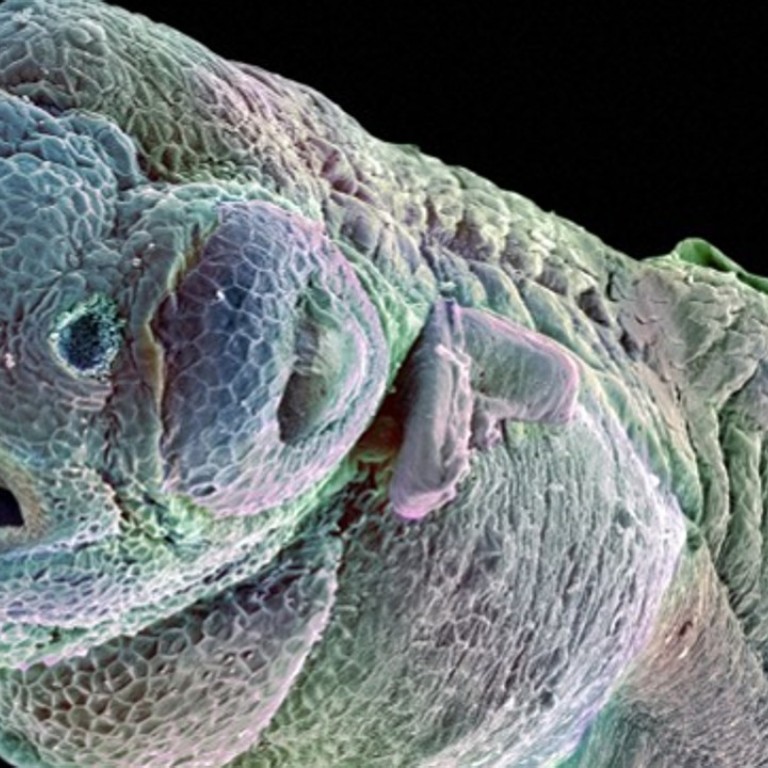
Imaging system developed by Chinese scientists maps brain activity in free moving zebrafish
Technology that links neural activity and behaviour could shed light on motion-related diseases such as Parkinson’s
Chinese scientists have recorded a visual representation of a fish thinking about its dinner in a rare glimpse inside the brain of a free moving animal.
When its prey came into sight, a group of neurons in the forebrain of the larval zebra fish started to glow in video footage captured by the researchers with a special underwater camera.
The fish had been genetically modified so its neurons would emit fluorescent light when they fired. That light could be seen under the illumination of blue laser beams.
As the zebra fish approached its prey, a single-cell organism known as a paramecium, the middle and hind areas of the brain lit up one after another.
“It took the fish three attempts to catch and eat the paramecium,” the researchers wrote in a paper published last month in the peer-reviewed journal eLife.
Immediately after the kill, the glow on the foremost portion of the brain decreased.
But “activities in the other groups of neurons continued to rise and persisted for about one second,” the researchers said.
The research was led by professor Wang Kai from the Centre for Excellence in Brain Science and Intelligence Technology at the Chinese Academy of Sciences in Shanghai.
The new imaging system they built for the experiment would help draw “a comprehensive functional map that links neural activities and behaviours”, to shed light on a wide range of motion-related diseases such as Parkinson’s and attention deficit hyperactivity disorder.
Zebra fish are ideal for scientific research as they share more than 70 per cent of their genes with humans. Also, the bodies of their young are almost transparent, which makes it easy for researchers to study neuron activity in their brains.
In the past, because of how fast the young fish move – they can accelerate as quickly as an average sports car – and how tiny they are, they could be monitored only if they were physically restrained.
With the new imaging system, however, the Chinese team were able not only to recognise individual fish and zoom in on them, but also predict its movements. The system uses two cameras – one permanently focused on the animal’s head and a second to capture a wider view – both of which recalibrate the fish’s location 300 times per second.
A similar, dual camera system was unveiled last week by a research team from Munich, Germany.
While whole-brain imaging of freely moving animals has been achieved before – on Caenorhabditis elegans roundworms – the subjects had considerably fewer neurons and moved much more slowly.
The larger the animals, and faster they move, the more of a challenge it is for the tracking and imaging technology, the Chinese researchers said.
“Our data revealed interesting neural dynamics arising from other brain regions during and after successful prey capture,” their paper said.
“The seamless integration of the tracking and imaging systems made it possible to show whole-brain neural dynamics during natural behaviour with unprecedented resolution,” it said.

